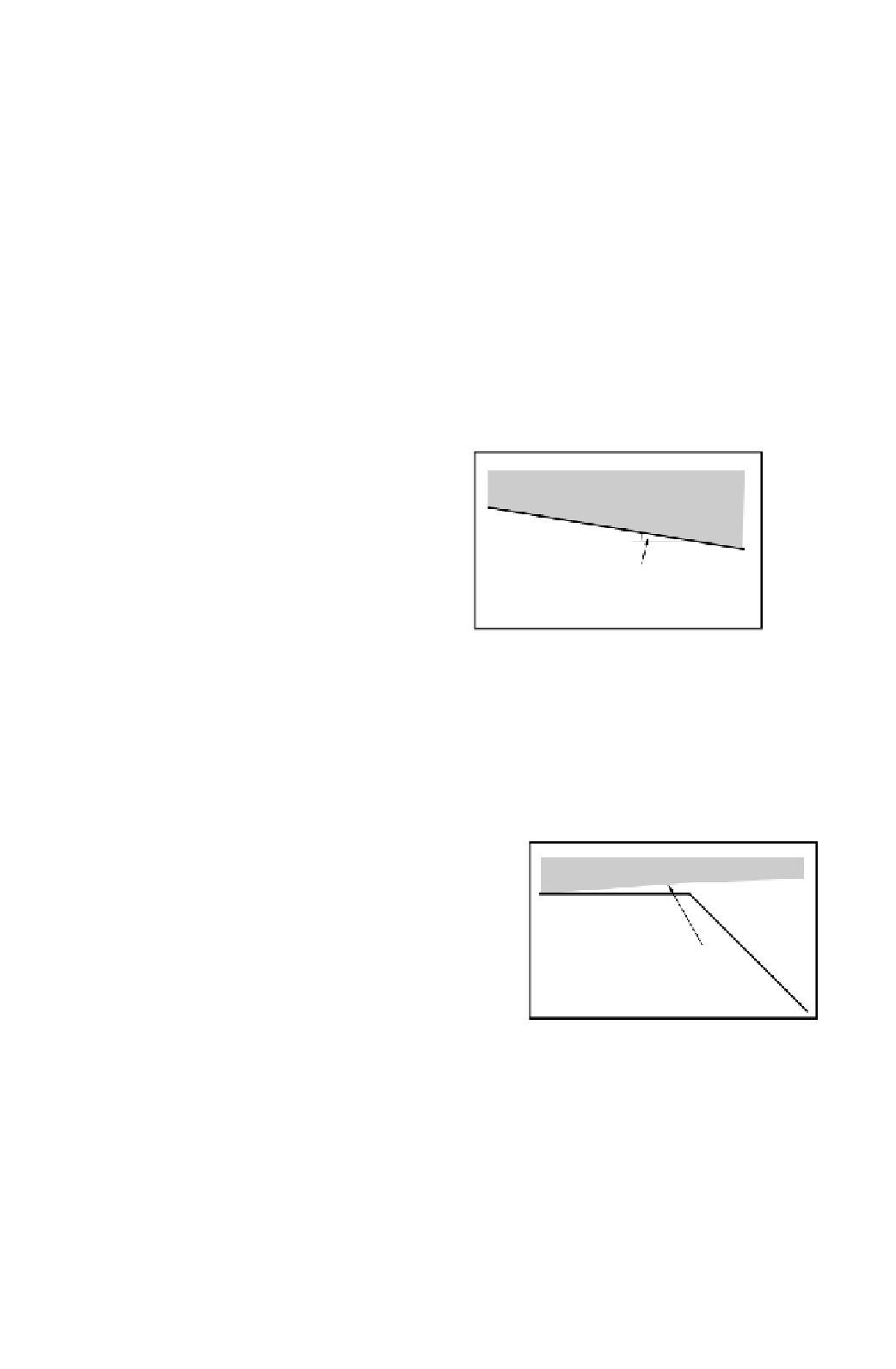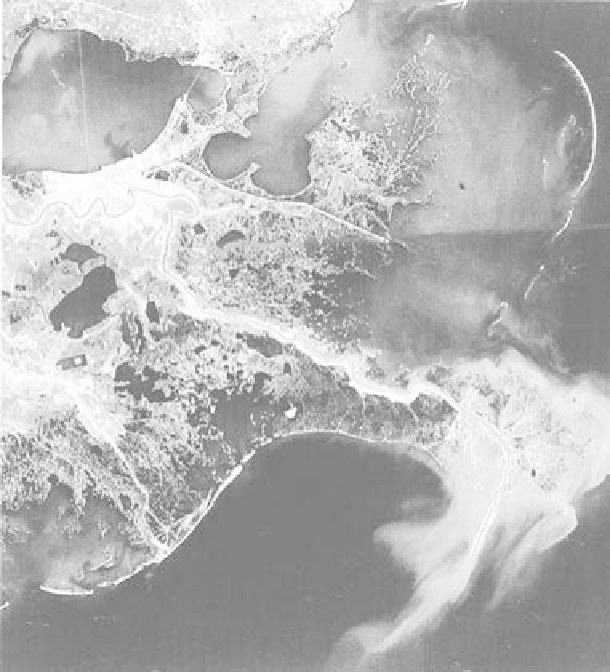Geoscience Reference
In-Depth Information
relatively slack water in estuaries where tidal currents are
important (Figs 6.52 and 6.53). The net accumulation of
sediment in the water column due to tidal pumping arises
because of inequality in the local magnitude of the
ebb and flood tides. If the flood is dominant in the upper
estuary, as is often the case, then more sediment enters
the upper estuary than leaves, and hence a
turbidity
maximum
occurs.
delta distributary (Fig. 6.54). This occurs as a jet, analogous
to the expanding flow of fluid issuing from any nozzle or
opening (Section 4.1). The nature of the discharge, the
physiography of the receiving basin, and the degree to
which the discharge is modified by wave and tide will con-
trol the gross morphology of a delta and the distribution
of sediment. Bates first considered the role of jets as rele-
vant and essential to the theory of delta formation. As
effluent fluid moves into the marine basin it has the possi-
bility to expand in both horizontal and vertical directions.
Plane jets
just expand horizontally while
axial jets
expand
in all directions. Gently sloping coasts restrict vertical
expansion and cause plane jet formation. Buoyant effects
between effluent and ambient fluids can give rise to
6.6.5
Delta distributaries
Consider the nature of the combined discharge of sedi-
ment and fresh water issuing from the mouth of a major
r
e
New Orleans
Frictional jet
(homopycnal)
Gentle
offshore
gradient
Abandoned
St Bernard
delta
Typical of shoal water
interdistributary bays
Typical of major
distributary outlets
Abandoned
Laforche
delta
r
e
r
a
Positively buoyant
plume
(hypopycnal)
Salt wedge
Fig.6. 54
Coastal jets illustrated from the Mississippi “birdsfoot” delta. Effluent jets and plumes rich in suspended sediment appear gray in this
satellite image. Note the form of this river-dominated delta, with its numerous distributaries issuing from the seaward extension of the main river
channel. The pattern of these gives rise to the term “birds-foot” delta. Most sediment deposition occurs during high river flow close to the mouths
of the distributaries, forming accumulations of sediment called “mouth bars.” Note the abandoned older Holocene deltas to the southwest and
northeast, which are now being reworked by wave action under conditions of rising local relative and absolute sea level: the city of New Orleans is
immensely vulnerable to both river flooding and marine inundation during major hurricane impact, as events of summer 2005 have proved.















Search WWH ::

Custom Search